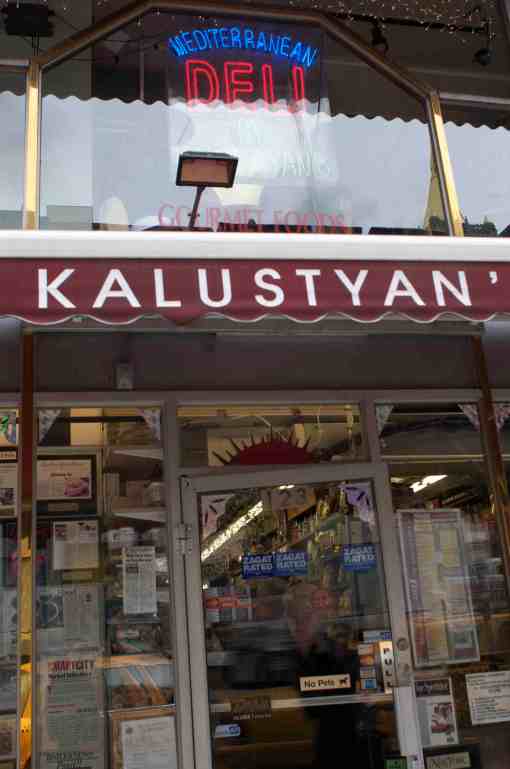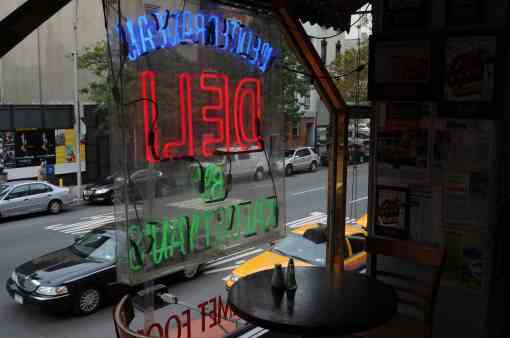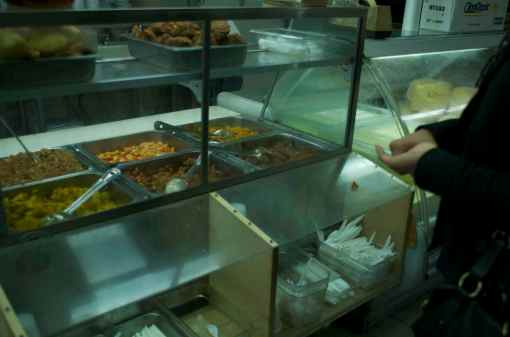DAY 15 -KALUSTYAN
I heard about this famous NY dely at the museum of Natural History, during a public talk by oral-historian Lucy Norris about pickles. The talk boiled down to a rather shallow intro to the fact that since time immemorial people have been preserving veggies in salt brine and/or vinegar. Disappointing indeed given the fame and means of the prestigious venue. In addition, the “talk” lent a generous amount of spotlight to a young entrepreneur who I will note cite here but had little more to say than the fact that his was a family business, i.e. that he learnt pickling from mum and dad. Given that what he learnt was the precedure of pickling and pasteurizing which is used by any factory around the globe, I see little point in bragging about “family”. Except of course, it this meant to be a clumsy attempt to capture the semantic connections to “the good old ways” and “the authentic and the healthy” that such branding can evoke. And the evening was full of strange exceptions, from a public venue with a pedagogical and cultural mission to a paying audience, paying to look at a few slides taken from Norris book and some more from thingy’s factory and then been entertained to a wide array of pickles which they were warmly welcome to buy in the near future. It was decidely Pavlovian and I felt like a guinea pig on a school trip.
The only “up” for me was the mango pickle Norris said had come from Kalustyan, a historical deli run by a Lebanese man and stocking its own brand of exquisite pickles. The mango was delightfully tangy and full. I could not work out the exact ingredients and procedure. I suspected vinegar may have been playing a role there but was intrigued by the appearance of exotic mango in a Middle Eastern recipe.
The next day I entered Kalustyan, walked by shelves full of the most incredible spices and up to the restaurant part. The I began wondering. The foods had very, very little to do with the opulent cunters of Lebanese snack bars I know from Brussels. There was something hopelessly sad and dusty about the stuff at Kalustyan. To just mention one thing, fresh raw vegetables were not there to be seen. I thought that this may be the NY spin on Lebanese or that maybe old Lebanese immigrants must reproduce an older version of their cuisine compared to more recent immigrants. Still it did not fit. It did not fit with the stacks of pickles below, which were anything except Lebanese. I ask one of the men working in the shop if Mr. Kalustyan was there and if he could tell me which was the mango that had been used for the public presentation to the museum of natural history two days earlier. I was bruskly pointed to a jar of industrially made mango pickle from Bangladesh.
Nothing wrong with Bangladesh and pickle, nothing wrong with industrial pickle, except that people should not be misled. Upon returning home I checked on the internet and found that Kalustyan had died in the 80s and his shop to two brothers from Bangladesh in 1988. Did “oral historian” Lucy Norris fail to notice that when she wrote her book on pickles or when she purchased her mango pickle or was it better to keep on selling the “Kalustyan brand”?
At home I opened my treasured jar and found the tangy flavor I had fallen for. After a brief search I located it in the mix of vinegar, spice, toasted fenugreek and mustard seeds. Still don’t know how long this can keep, given the small amount of salt and use of oil…




No trackbacks yet.